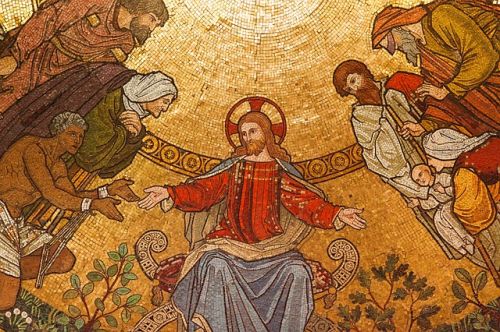Ancient church of apostles Peter and Andrew unearthed in northern Israel https://t.co/vstde7TyD2
— CUFI UK (@CUFI_UK) July 26, 2019

A team of archaeologists from US and Israel have discovered the Church of the Apostles, believed to have been built over the house of Peter and Andrew, the disciples of Jesus, near Israel's Sea of Galilee.
The archaeologists from Kinneret Institute for Galilean Archaeology at Kinneret College, Israel and Nyack College in New York have been conducting an excavation operation at the site of el-Araj on the northern shore of the Sea of Galilee and near where the Jordan River enters the lake.
It should be noted that el-Araj is one of those cities which are argued to be a candidate for the site of Bethsaida mentioned in the Gospel.
The same team of archaeologists had earlier excavated the site and found evidence of the historic church, including pieces of marble from its chancel screen and small gilded glass blocks called tesserae that were used in ornate church wall mosaics.
Professor Steven Notley of Nyack College told the Fox News "These discoveries already informed us that the church was waiting to be found somewhere nearby."
When the team followed the clues, they finally discovered the mosaic floor of the church. Notley explained that it was remarkable to find a beautiful floor like this which was buried under the ground for almost 1500 years.
He also added that the description of the Byzantine church had been always mentioned by early Christian pilgrims, specifically by the Bavarian bishop Willibald. As per Notley the 8th-century bishop of Eichstätt in Bavaria said that this church was built over the house of Peter and Andrew.
Notley mentioned that this discovery has its own significance as many scholars earlier questioned its existence. Even though the Church of the Apostles was mentioned in many Byzantine pilgrimage itineraries, many experts used to believe that these reports were not trustworthy.
He further added that this discovery was important because the remains of the church "indicate that there existed a living memory in the Christian community about the location of Bethsaida, home of Peter, Andrew and Philip (John 1:44)" and "el-Araj should be considered the leading candidate for New Testament Bethsaida-Julias."
The researchers will entirely excavate the Byzantine church as they have uncovered some of the southern rooms of the church, likely the southern aisle. Electromagnetic images also suggested that there are more buildings and structures, yet to be uncovered at el-Araj. However, future excavation at this ancient site is expected to reveal more secrets from history.









